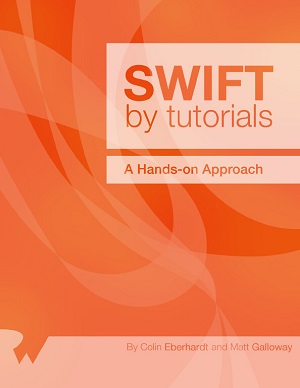
出版时间:2014.12
官网链接:RayWenderlich
下载地址:百度网盘(PDF+CODE)
内容简介:
Learn Apple’s brand new programming language, Swift, the quick and easy way: via hands-on tutorials! Through a series of real-world, practical examples you will bring your Swift knowledge from beginner to master.
Swift by Tutorials covers the following topics:
- Language Basics: Variables, constants, types, equality, strings, optionals, collections, and more: get off the ground with the language essentials.
- Classes & Structs: Data structures like classes and structs are at the heart of any object-oriented language. This is the first chapter where you’ll build a full-featured iOS app.
- Generics: In C++ it’s called templates; in Swift it’s called generics: Generic programming allows you to write an algorithm once and reuse it for multiple types.
- Functions & Closures: It’s hard to write code without using functions! Closures are a related topic. (Spoiler alert—in Swift, they’re just unnamed functions!)
- Enums & Switch Statements: Swift introduces extremely powerful enum types. Switch statements are crucial to unlocking their potential.
- Functional Programming: Functional programming is a popular topic right now—quite a departure from more traditional, imperative programming. Swift builds this paradigm right into the core of the language.
- Swift & Cocoa: 90% of iOS development is interfacing with Cocoa frameworks—this remains true with Swift. This chapter illustrates how you will work with Cocoa in Swift; you’ll also see how bridging headers work so you can continue to use Objective-C code and libraries in Swift.
- Swift vs. Objective-C: Existing Objective-C developers will be wondering what’s different with Swift, or how to do their favorite things using Swift. In this chapter, you’ll re-implement an Objective-C app in Swift to compare and contrast the two languages.
- Language Quick Reference: As you’re coding your own Swift applications, you can refer back to this reference to remind yourself how something works.
The iOS Tutorial Team takes pride in making sure each tutorial we write holds to the highest standards of quality. We want our tutorials to be well written, easy to follow, and fun. And we don’t want to just skim the surface of a subject – we want to really dig into it, so you can truly understand how it works and apply the knowledge directly in your own apps.